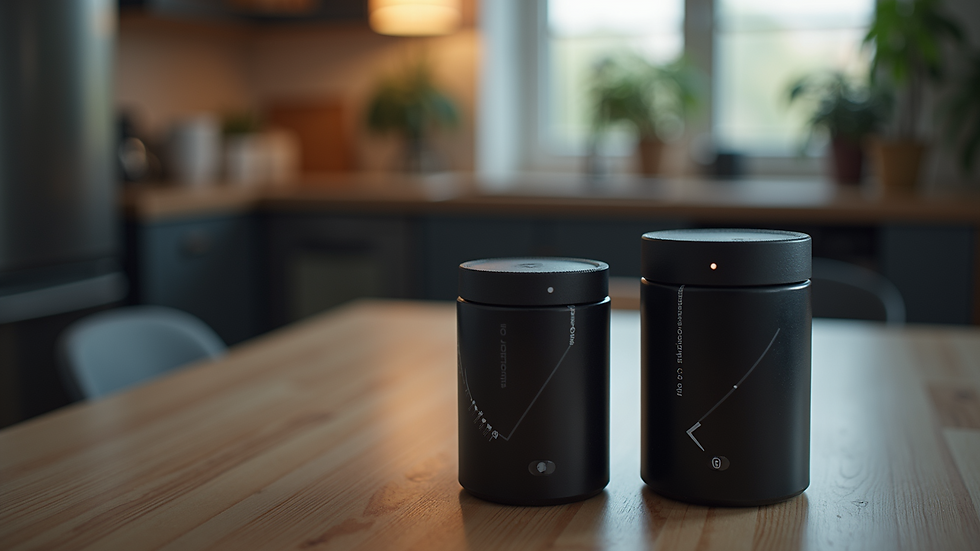Ensuring Safety with Professional Radon Testing
- Frank Talarico
- Aug 6
- 4 min read
Radon is a naturally occurring radioactive gas that can seep into homes and buildings from the ground. It is colorless, odorless, and tasteless, making it impossible to detect without proper testing. Prolonged exposure to high levels of radon can lead to serious health risks, including lung cancer. This makes radon testing an essential step in maintaining a safe living environment. Understanding the importance of professional radon testing can help you protect your home and family effectively.
Why Professional Radon Testing Matters
Professional radon testing is crucial because it provides accurate and reliable results. Unlike DIY kits, professional testers use advanced equipment and follow strict protocols to measure radon levels precisely. This ensures that any radon presence is detected early, allowing for timely mitigation.
Professional testers are trained to identify the best locations for placing radon detectors, which is vital for obtaining representative readings. They also understand how to interpret the data and recommend appropriate actions based on the results.
For example, a professional radon test might reveal elevated radon levels in a basement or ground floor, prompting the installation of a radon mitigation system. This system can reduce radon concentrations by venting the gas outside, significantly lowering health risks.

Radon detectors placed strategically ensure accurate measurement of radon levels.
How Professional Radon Testing Is Conducted
The process of professional radon testing involves several key steps to guarantee accuracy:
Initial Assessment - The tester inspects the property to determine the best locations for placing radon detectors. This includes basements, crawl spaces, and ground floors.
Placement of Detectors - Specialized radon detectors are placed in selected areas. These devices can be short-term (2-7 days) or long-term (up to 90 days), depending on the testing needs.
Monitoring Period - The detectors remain in place for the designated period to collect radon data.
Data Collection and Analysis - After the monitoring period, the devices are collected and analyzed in a lab or by the testing equipment.
Reporting - The tester provides a detailed report outlining radon levels and recommendations for mitigation if necessary.
Professional radon testing services often include follow-up consultations to discuss results and next steps. This comprehensive approach ensures homeowners understand their radon risk and how to address it.

Technicians carefully place radon detectors to ensure accurate readings.
Can I Test for Radon on My Own?
While it is possible to test for radon on your own using DIY kits, there are limitations to this approach. Home test kits are widely available and can provide a basic indication of radon levels. However, they may not be as accurate or reliable as professional testing.
DIY kits often require you to place the detector in a specific location and send it to a lab for analysis. Mistakes in placement or handling can lead to inaccurate results. Additionally, short-term tests may not capture fluctuations in radon levels over time.
If you choose to test on your own, consider the following tips:
Follow the instructions carefully to avoid contamination or errors.
Place the detector in the lowest lived-in level of your home.
Avoid testing during extreme weather or ventilation changes.
Use long-term tests for more reliable results.
Despite these options, professional radon testing remains the gold standard for ensuring safety. Professionals have the expertise and equipment to provide a thorough assessment and peace of mind.

DIY radon test kits offer a basic way to check radon levels but may lack precision.
Understanding Radon Mitigation Options
If professional testing reveals elevated radon levels, mitigation is necessary to reduce exposure. Radon mitigation involves installing systems that prevent radon from entering the home or reduce its concentration.
Common radon mitigation methods include:
Sub-slab Depressurization - A pipe and fan system installed beneath the foundation to vent radon gas outside.
Sealing Cracks and Openings - Sealing foundation cracks and gaps to limit radon entry.
Improving Ventilation - Increasing air circulation in basements and crawl spaces to dilute radon levels.
Crawl Space Ventilation - Installing vents or fans to reduce radon accumulation in crawl spaces.
Professional radon testing services often include recommendations for the most effective mitigation strategy based on your home's structure and radon levels. Proper installation and maintenance of mitigation systems are essential for long-term safety.
Maintaining a Radon-Safe Home
Ensuring your home remains safe from radon requires ongoing vigilance. After mitigation, regular testing is recommended to confirm that radon levels stay low. Here are some practical tips to maintain a radon-safe environment:
Schedule radon testing every 2-5 years or after major renovations.
Monitor your mitigation system to ensure it is functioning correctly.
Keep basement and crawl space areas dry and well-ventilated.
Educate family members about radon risks and safety measures.
By staying proactive, you can protect your household from the dangers of radon exposure and enjoy peace of mind.
Professional radon testing is a vital step in safeguarding your home from invisible health hazards. Utilizing expert services ensures accurate detection and effective mitigation, helping you maintain a healthy living space. For reliable and thorough radon testing, consider trusted radon testing services that prioritize your safety and well-being.



Comments